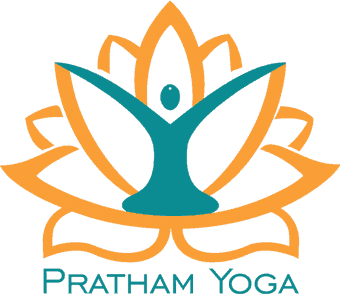The Seven Chakras: Balancing Energy Centers with Yoga, Pranayama, and Meditation
Exploring the Mystical Path of Chakras
In the ancient wisdom of yoga, the concept of chakras has been revered for centuries as a key to unlocking human potential. The major Chakras are energy centers or “whirlpools” located along our spine and head, at the crossing points of the three main Nadis (energy channels) Ida, Pingala, and Shushumna, within the subtle body that influence our physical, emotional, and spiritual well-being. As Yoga practitioners and teachers or students of Yoga Teacher Training, it is essential to have a basic understanding of what the chakras are in order to include a deeper form of practice and balancing effect into the daily routine.
There are seven main chakras that run along the central channel of our body, from the base of the spine to the crown of the head. Each chakra is associated with specific qualities, such as color, element, and psychological attributes. These chakras are believed to be interconnected and influence our physical, emotional, and spiritual states.
When the chakras are open and balanced, the energy flows freely, promoting harmony, vitality, and overall well-being. However, blockages or imbalances in the chakras can disrupt the energy flow, leading to physical ailments, emotional disturbances, or spiritual disconnection.
Various practices, such as meditation, yoga, breathwork, and energy healing, aim to activate, cleanse, and balance the chakras. By working with the chakras, individuals can cultivate self-awareness, promote healing, and enhance their overall sense of wholeness and spiritual growth.
It’s important to note that while chakras have their roots in ancient traditions, their understanding and significance have been embraced by many cultures and spiritual practices worldwide. They serve as a powerful framework for exploring and harmonizing the complex interplay of energy within ourselves and our connection to the universe.
By understanding and balancing the seven main chakras, one can achieve harmony and alignment in life. In general, there are also minor chakras located over our bodies. In this blog article, we will delve into the significance of each main chakra and explore how specific yoga asanas, pranayamas, and meditation techniques can help balance them.
Here follows an easy-to-understand introduction to the 7 main Chakras:
-
Root Chakra (Muladhara)
The Root Chakra, located at the base of the spine, represents stability, security, and grounding. The color red, the element earth, sense of smell.
- Balanced State: Feeling grounded, secure, and connected to the physical world. A sense of stability, safety, and trust in oneself and others.
- Imbalanced State: Insecurity, fear, and lack of stability. Physical symptoms may include lower back pain or issues with the legs and feet. Overly materialistic or stuck in survival mode.
To balance this chakra, focus on yoga asanas that connect you to the earth, such as Tadasana (Mountain Pose), Virabhadrasana I (Warrior I), and Balasana (Child’s Pose). These poses help in channeling energy downward and creating a sense of rootedness.
Pranayama: Dirga Pranayama (Three-Part Breath) is ideal for grounding and calming the mind.
Meditation: Visualize red, glowing energy at the base of your spine, fostering a feeling of security and stability.

-
Sacral Chakra (Swadhisthana)
The Sacral Chakra, situated in the lower abdomen, is associated with creativity, sensuality, and emotional expression. Color orange, element water, sense taste.
- Balanced State: Emotionally balanced, creative, and passionate. Healthy relationships with others and a strong sense of pleasure and enjoyment in life.
- Imbalanced State: Emotional instability, difficulty with intimacy, or creative blocks. This may lead to issues with the reproductive system and lower abdomen.
To balance this chakra, incorporate yoga asanas that activate the pelvis and hips, such as Bhujangasana (Cobra Pose), Baddha Konasana (Butterfly Pose), and Gomukhasana (Cow Face Pose).
Pranayama: Nadi Shodhana (Alternate Nostril Breathing) can help release emotional blockages and promote balance.
Meditation: Imagine an orange, swirling energy at your sacral area, inspiring creativity and emotional flow.

-
Solar Plexus Chakra (Manipura)
The Solar Plexus Chakra, located in the upper abdomen, is associated with personal power, confidence, and self-esteem. Color yellow, the element fire, sense vision.
- Balanced State: Confident, self-assured, and assertive. Trusting of one’s instincts and personal power. Motivated and able to take on challenges.
- Imbalanced State: Low self-esteem, lack of confidence, and feeling powerless. Digestive issues, difficulty making decisions, and being overly controlling or aggressive.
To balance this chakra, focus on yoga asanas that engage your core, such as Navasana (Boat Pose), Ardha Matsyendrasana (Half Lord of the Fishes Pose), and Virabhadrasana III (Warrior III).
Pranayama: Kapalabhati (Skull-Shining Breath) can activate the solar plexus and instill confidence.
Meditation: Visualize radiant yellow energy at your solar plexus, empowering you with self-assurance.

-
Heart Chakra (Anahata)
The Heart Chakra, situated in the center of the chest, is the seat of love, compassion, and connection. Color blue -green, element air, sense touch.
- Balanced State: Openness to love, compassion, and empathy. The strong connection to oneself and others, capable of forgiveness and kindness.
- Imbalanced State: Closed off emotionally, difficulty forming meaningful relationships, and inability to forgive. Can manifest as heart-related issues or respiratory problems.
To balance this chakra, practice yoga asanas that open and expand the chest, such as Ustrasana (Camel Pose), Bhujangasana (Cobra Pose), and Matsyasana (Fish Pose).
Pranayama: Anulom Vilom (Alternate Nostril Breathing) can purify the heart’s energy and promote love and empathy.
Meditation: Envision a vibrant green light emanating from your heart, radiating love and compassion to yourself and others.

-
Throat Chakra (Vishuddha)
The Throat Chakra, located at the base of the throat, governs communication, self-expression, and authenticity. Colour sky blue, element: ether.
- Balanced State: Clear and authentic communication. Expressing oneself truthfully and creatively. Listening actively and speaking with integrity.
- Imbalanced State: Difficulty expressing thoughts and emotions, fear of speaking up, or excessive talking without substance. May lead to throat or neck problems.
To balance this chakra, practice yoga asanas that stretch and open the neck and throat region, such as Sarvangasana (Shoulder Stand), Halasana (Plow Pose), and Matsyasana (Fish Pose).
Pranayama: Ujjayi Pranayama (Victorious Breath) can regulate the throat chakra and promote clear communication.
Meditation: Imagine a soothing blue light glowing at your throat, encouraging honest and authentic expression.

-
Third Eye Chakra (Ajna)
The Third Eye Chakra, situated between the eyebrows, is associated with intuition, insight, and spiritual awareness. Colour deep indigo, element: mind.
- Balanced State: Heightened intuition, clarity of thought, and a deep sense of inner wisdom. Connection to one’s intuition and inner guidance.
- Imbalanced State: Lack of clarity, confusion, and inability to trust one’s intuition. May manifest as headaches or issues with the eyes and ears.
To balance this chakra, focus on yoga asanas that enhance concentration and balance, such as Balasana (Child’s Pose), Padmasana (Lotus Pose), and Shavasana (Corpse Pose).
Pranayama: Brahmari (Bee Breath) is beneficial for stimulating the Third Eye and calming the mind.
Meditation: Visualize an indigo light at your Third Eye, connecting you to your inner wisdom and intuition.

-
Crown Chakra (Sahasrara)
The Crown Chakra, located at the top of the head, represents spiritual connection and enlightenment. Colour purple, element: all.
- Balanced State: Spiritual connection, a sense of oneness with the universe, and a deeper understanding of life’s purpose.
- Imbalanced State: Disconnected from spirituality, lack of purpose, and difficulty finding meaning in life. Can lead to feelings of isolation and mental health issues.
To balance this chakra, practice yoga asanas that facilitate a sense of surrender and openness, such as Sirsasana (Headstand), Sasangasana (Rabbit Pose), and Ardha Pincha Mayurasana (Dolphin Pose).
Pranayama: Sahaja Pranayama (Spontaneous Breath) helps in aligning the Crown Chakra and connecting with higher consciousness.
Meditation: Visualize a radiant violet light at your crown, symbolizing your connection to the divine and the universe.

It’s important to remember that achieving a perfectly balanced state in all chakras is an ongoing process, and each individual may experience imbalances differently. Working on chakra balancing through various practices can help restore harmony and promote overall well-being.
If you have any questions on this topic, don’t hesitate to reach out to us by email or IG pratham_yoga!
Learn about the 7 Chakras by joining PRATHAM YOGA for a Retreat or Yoga Teacher Training Course in Rishikesh
Balancing the seven chakras through yoga, pranayama, and meditation can lead to profound transformation and inner harmony. At Pratham Yoga in Rishikesh, we offer comprehensive courses and retreats including knowledge on Chakras in a serene natural environment, ideal for those seeking a quiet and contemplative setting.
Through the expert guidance of our Asana and Philosophy teachers who hold a master’s degree in Yogic Sciences (title Yogaacharya), you can embark on a journey of self-discovery and spiritual growth, exploring the mystical path of chakras and unveiling the vast potential within yourself. Embrace the transformative power of Chakra Yoga and experience a deeper connection with your body, mind, and spirit.
ONLINE: Book a private online class with Yogaacharya Vijay from Pratham Yoga Team and learn about Chakras and Yoga in detail.

Student at our Outdoor Yoga platform
Article written by: Carolin Dutt. Expat living in India Hatha, Vinyasa and Prenatal Yoga Teacher, Ayurveda lover ♥ Part of Pratham Yoga Team since 2018


